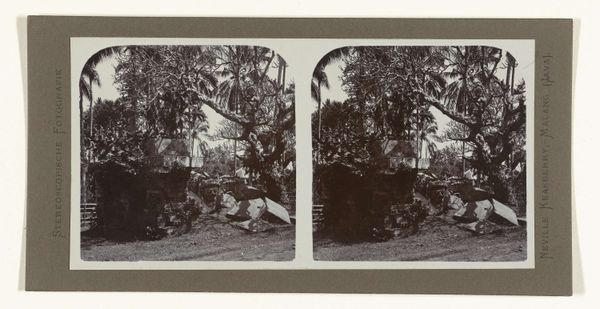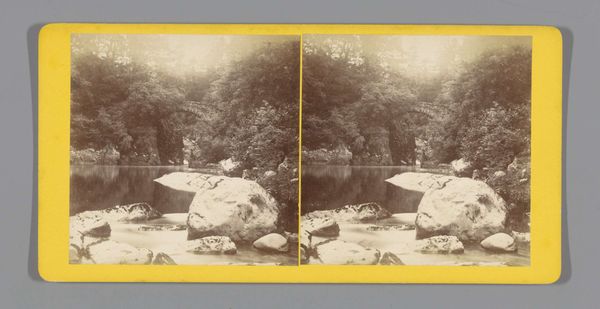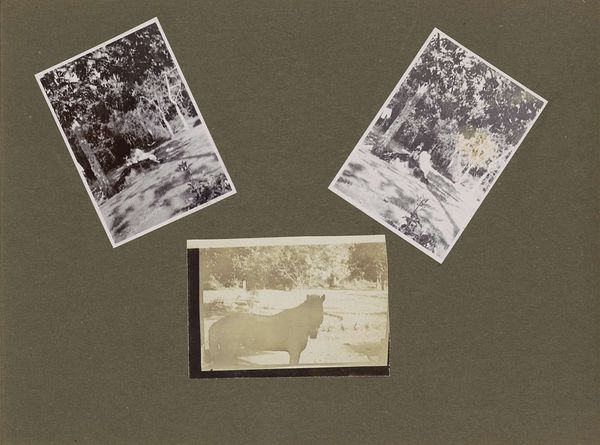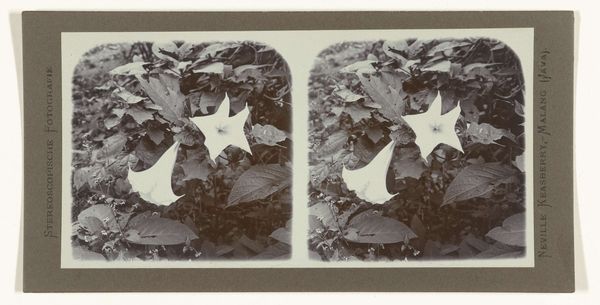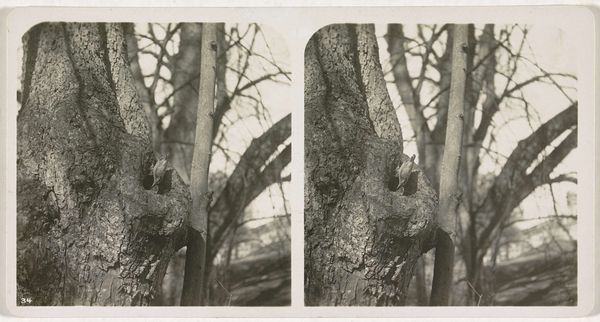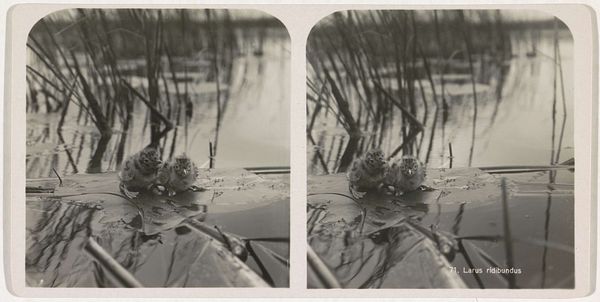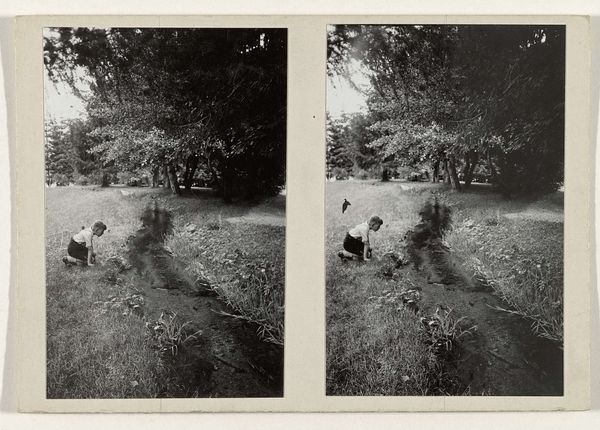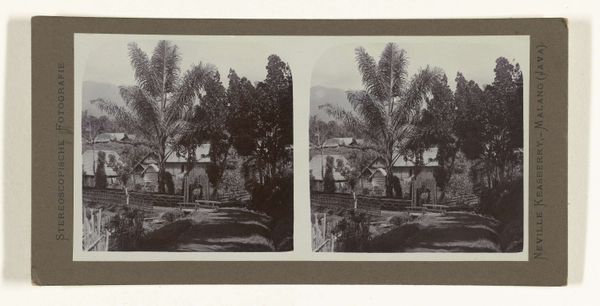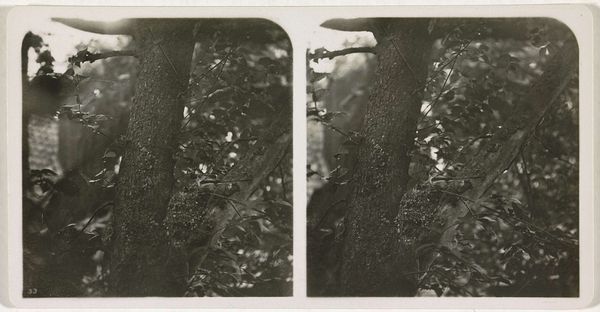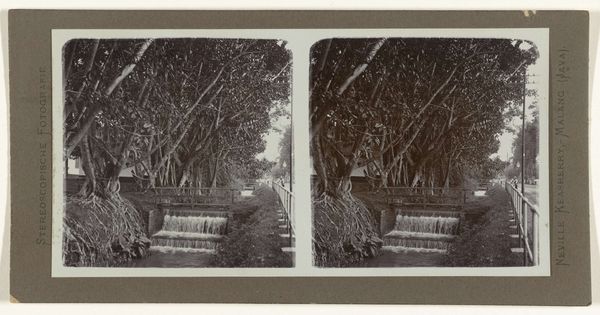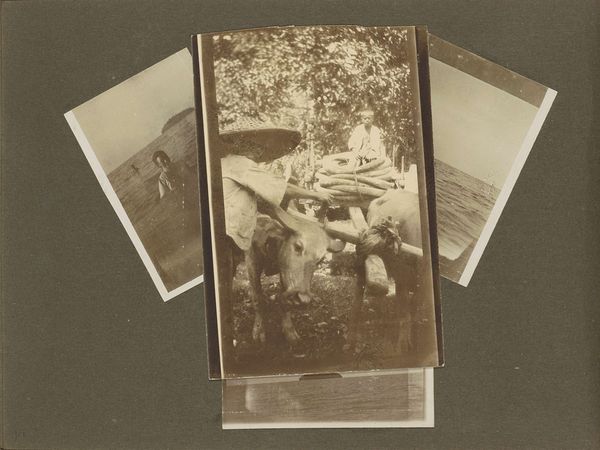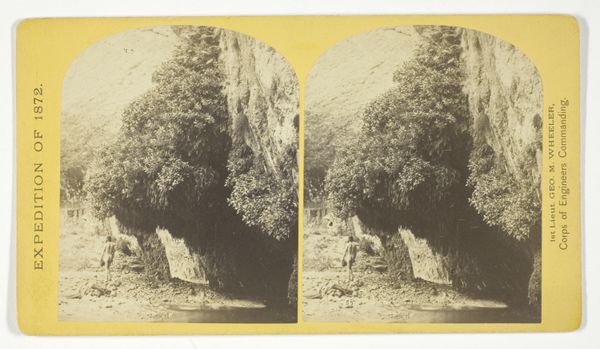
#
photo of handprinted image
#
natural shape and form
#
3d printed part
#
wedding photography
#
organic shape
#
live laugh love
#
sculpture
#
unrealistic statue
#
carved into stone
#
shadow overcast
Dimensions: height 76 mm, width 152 mm
Copyright: Rijks Museum: Open Domain
Curator: This is a stereoscopic photograph entitled "Javaanse boten in de kalimas in Surabaya," placing it somewhere between 1900 and 1935. What strikes you initially? Editor: The composition! It’s classically structured: foreground, middle ground, background. The contrast between the stillness of the water and the density of the foliage is quite compelling. Curator: Agreed. Looking at this photograph, I consider the material conditions required to produce this image in that time period. What kind of labor, processes and equipment are needed? Who is behind the camera and for what purpose? What story does it not tell? Editor: That’s valid, but consider the photographer's engagement with light and shadow! The way the light glances off the water's surface, mirroring the boats. See how it subtly defines form, and evokes depth! The choice of monochrome further focuses the viewer's attention on these formal relationships, don't you think? Curator: Precisely, a commercial studio sought to represent colonial Java, with aesthetics shaped by technology available and economic models dictating what would sell. So is the emphasis really about the interplay of light and shadow, or about marketing a specific, perhaps idealized vision, to a particular audience? Editor: The 'vision', as you call it, succeeds because of the formal elements employed! Notice the boats, their linear arrangement against the organic lines of the riverbank… a masterful balancing act. The textures, the reflections…these elements contribute to a harmonious whole that transcends mere documentation. Curator: True, the interplay is visually attractive, but what is left out? Where are the indigenous laborers maintaining these boats, the port workers, the daily struggles that provided the backdrop to this scene? The consumption and creation of the image has a human element at its foundation that warrants attention. Editor: I grant you that aspects may be unseen, yet the very choice of subject – a river scene in Java – speaks volumes about cultural exchange and the visual language being established. To dissect how forms reflect and refract meaning is a powerful approach to cultural understanding. Curator: Ultimately, for me, understanding the political and economic structures informs how the image was shaped and then circulated in society. Editor: A valuable reflection that helps broaden our perspective!
Comments
No comments
Be the first to comment and join the conversation on the ultimate creative platform.
